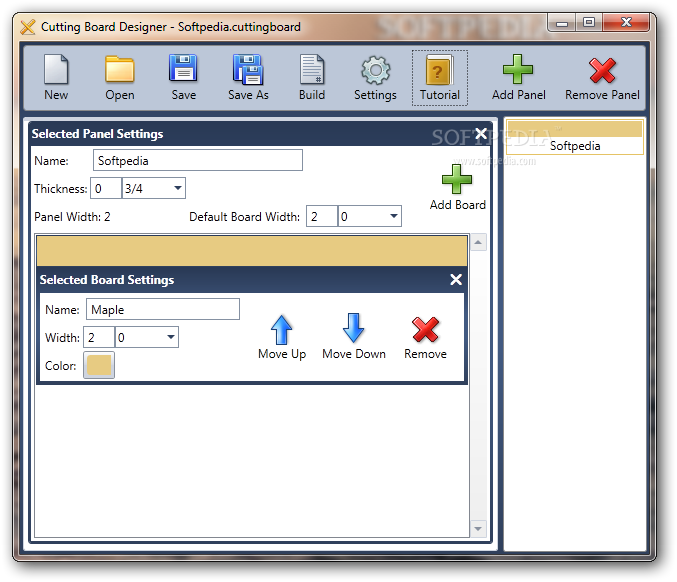Cutting Board Designer Keygen

Cutting Board Types The three basic types of cutting boards are end grain, edge grain and flat grain. To understand how they compare in strength, stand a 2-by-4 piece of lumber on its end and look at the top.
The cut, end grain side you see is the strongest side of the wood. For example, if you glued a bunch of 2-by-4s together with the cut sides showing, that would be the strongest construction method. If you turned the same piece of wood on its side, the edge grain side you see would be weaker than the end grain and more susceptible to deep cuts. Edge grain cutting boards are inferior to end grain types because they are made from long pieces of wood rails fused together side by side along the length of the cutting board.

Cutting Board Designer Program
Finally, if you laid the 2-by-4 flat on the ground with the surface showing, that would be the weakest of all configurations, nicking deeper and more quickly than the other options. Tips and Hints Choose or build a butcher block with short legs.

Cutting Board Designer For Mac
Although this renders it non-reversible, allowing air to circulate on all sides keeps the wood dry and strong. Butcher blocks with moats around their perimeters catch drippings from meats during carving and juices from chopped fruits and vegetables. Avoid immersing the board in water and thoroughly dry it after washing it with mild soap and water and rinsing it under cool, running water. If deep cuts occur, sand the surface smooth with an oscillating sanding tool or a sanding block, then oil it using a soft rag dipped in a blend of warmed mineral oil and melted beeswax.
Latest News
- Download Kendrick Lamar Section 80 Zip File
- Install Modem Router
- Download Wonder Woman 1975 Dvd
- Charter Arms Undercover Owners Manual
- Wilcom Es 65 Crack
- Jbilling Installation Software
- Egyptian League Patch Fifa 2008
- Crack Eplan Electric P8 2.4
- Beatmania The Sound Of Tokyo Iso Burner
- Download Film Saint Seiya Hades Sub Indo
- Lounge Lizard Mac Crack
- 2 Cakewalk Download Sonar X3 Producer Torrents
- Windows Vista Black Dream Sp3 Final Build